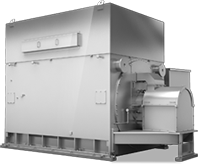Synchronous Condenser
Cost Effective Power Transfer
GE Vernova’s Synchronous Condenser Systems are engineered and designed to provide a highly reliable and efficient solution to address reactive compensation and voltage support requirements, providing transmission operators an optimized solution for cost, performance and operational flexibility.
GE Vernova’s Synchronous Condensers are modular, air-cooled and rated for any range up to 300Mvar+ per machine. The solution can provide both steady state and dynamic support to the power system efficiently. GE Vernova machines can be easily combined in 2 or 3 unit sets to offer utilities reliability, ease of maintenance and operational flexibility.
Synchronous Condenser
Cost Effective Power Transfer
GE Vernova’s Synchronous Condenser Systems are engineered and designed to provide a highly reliable and efficient solution to address reactive compensation and voltage support requirements, providing transmission operators an optimized solution for cost, performance and operational flexibility.
GE Vernova’s Synchronous Condensers are modular, air-cooled and rated for any range up to 300Mvar+ per machine. The solution can provide both steady state and dynamic support to the power system efficiently. GE Vernova machines can be easily combined in 2 or 3 unit sets to offer utilities reliability, ease of maintenance and operational flexibility.
Today’s Challenging Environment
For most utilities ensuring grid reliability, efficiency, and security is a primary concern. As the grid evolves and load profiles change, stresses are being put onto transmission and distribution networks, making the work of grid management much more challenging. Globally, utilities are facing many grid challenges and market condition changes including:
- Changes in generation mix
- Decrease in conventional generation
- Increase in renewable and distributed generation
- Environmental and regulatory policy changes, driving the retirement of traditional coal generating stations
These challenges have an operational impact on the electrical infrastructure, in particular creating an overall deficiency in:
- Reactive compensation support
- Voltage support
- System inertia
- Low short circuit ratios on the network
GE Vernova’s Solution
GE Vernova offers transmission utilities a simple and reliable solution to address reactive compensation and voltage support requirements. Our newly re-designed motor based Synchronous Condensers are custom designed to provide transmission operators with a proven, robust and reliable solution.
| GE Vernova Synchronous Condenser Overview | |
|---|---|
| Ratings | Range from 10 to 300 Mvar+ per machine |
| Rotor | Round 2-Pole or Solid Salient Pole |
| Poles | 2, 4 or 6 |
| Excitation | Static or Brushless |
| Starting | Full Voltage, Reduced Voltage, Reactor start, Pony Motor |
| Cooling | TEWAC, TEAAC, WP, TEPV |
The GE Vernova Advantage
GE Vernova’s Synchronous Condenser Systems are engineered and designed to provide a highly reliable and efficient solution, providing an optimized solution for cost, performance and operational flexibility.
Modular design resulting in operational flexibility and decreased down time
GE Vernova has combined multiple synchronous condenser machines into systems that allow for reduced overall footprint, customize Mvar ratings and maintenance flexibility for utilities to reduce operational downtime.
Robust design with extended life resulting in minimal maintenance
GE Vernova synchronous condensers have superior construction, resulting in high efficiency, reliability, and provide easy access for routine maintenance and low vibration for a long life.
Customized design and use of innovate technology resulting in increased reliability and reduced risk of failure
Unique forged integral pole tip design well suited to high load inertia applications. Low mechanical stress is achieved through:
- Fewer loose components
- Improved mechanical stability
- Reduced hot spots during starting
- No pole screw locking concerns
- No differential thermal expansion problems
- Proven experience including the world’s largest 1,800rpm motor
Extensive experience resulting in seamless integration into the utility transmission grid
GE Vernova leads the industry with more than 100 years of experience and the proven synchronous condenser design has been applied in over 200 applications.
Key Benefits of GE Vernova’s Synchronous Condensers
Short-term Overload Capability
The GE Vernova Synchronous Condenser has a large current overload capability. which can provide beneficial system support during emergencies or short term contingencies. As can be seen below, a GE Vernova Synchronous Condenser can provide more than two times its rating for up to 10 seconds. The machine’s significant overload capability can be accounted for in choosing the size of the machine required.
Low Voltage Ride Through
The GE Vernova Synchronous Condenser system has the ability to remain connected and to provide the necessary system benefits even under extreme low voltage contingencies. Mechanical inertia combined with state of the art excitation provides smooth reliable support that is naturally compatible with generation. Power electronic-based solutions do not have mechanical inertia and therefore cannot deliver comparable ride-through performance.
Provides System Inertia
Inertia is an inherent feature of a Synchronous Condenser, since it is a rotating machine. The benefit of this inertia is improved frequency regulation where more renewable generation is being added or where existing generation is being retired.
Response Time
GE Vernova Synchronous Condensers are fast enough to meet dynamic response requirements by using modern excitation and control systems. GE Vernova has integrated today’s advancements in control technologies into a proven machine design to make that solution better than ever.
Short Circuit Contribution
Synchronous Condensers provide real short circuit strength to the grid. Increased short circuit improves system stability with weak interconnections, facilitates system protection and can improve the operation of modern power electronics installations.
Minimal Harmonic Generation
The Synchronous Condenser is not a source of harmonics and can even absorb harmonic currents. The lack of harmonics help make the synchronous condenser friendly to the surrounding grid and other devices. This provides for ease of integration into existing networks.
Minimal Network Interactions
The GE Vernova Synchronous Condenser mitigates system control interaction concern by utilizing traditional and robust electrical components combined with state of the art control architecture that does not cause undesirable interactions with your existing FACTS devices.
Installation & Maintenance Benefits
Fast Project Cycle Time
The system only requires integration to commonly available power delivery components resulting in accelerated project cycle times. The design, manufacture, installation and commissioning of a Synchronous Condenser system can be completed within 16 months. GE Vernova’s experienced Power Projects team has 99% record of on-time project completion and greater than 98% on-budget execution.
Proven Design and Increased Reliability
The GE Vernova Synchronous Condenser is designed to provide trouble-free, reliable service and is a proven solution with more than 200 applications over nearly a century. Advancements in materials and manufacturing techniques, combined with modern control technologies, have greatly improved the reliability and functionality of this robust, time-tested solution. Operators can now utilize the simplicity of electro-mechanical system combined with the benefits of a state of the art excitation and control system in order to meet their grid support needs.
Minimal Maintenance
The GE Vernova Synchronous Condensers proven design requires minimum maintenance resulting in minimal operating costs and reduced total cost of ownership.
Core Components
GE Vernova’s Synchronous Condenser system consists of components commonly used in electric utilities and industrial facilities, with proven robustness and reliability.
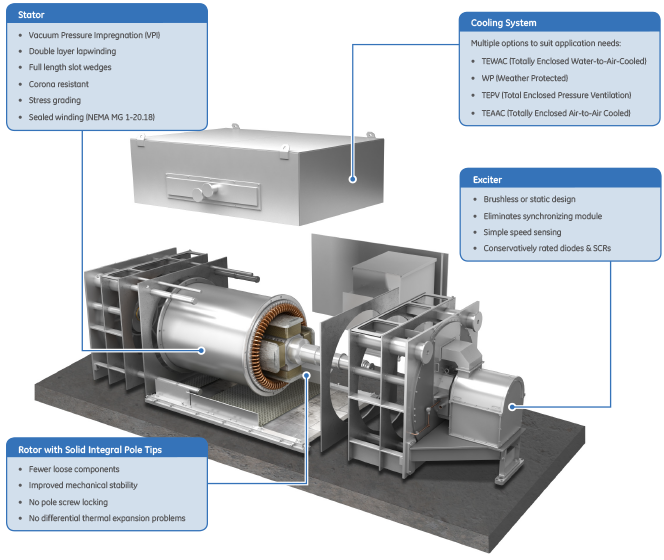
Integrated Intelligent Controls

Control Systems & Protection Relays
- Proven controls architecture
- Multilin multi-function digital protection relays
- Secure communications infrastructure
- Human Machine Interface (HMI) operator friendly
- Digital solid state controls

Power Delivery Equipment
- Generator Step Up (GSU) transformer
- HV/MV circuit breakers & switches
- Ancillary systems (lube oil skid)
- Starting reactors
- Instrument transformers (CT/VT)
Typical Applications

HVDC
- Provides Short Circuit Strength
- Dynamic reactive power support (voltage regulation)
- Reduces local harmonic distortion (filter)

Wind/Solar
- Improves or increases short circuit ratio (SCR)
- Dynamic voltage support
- Can improve and extend wind plant capacity ratings
- Provides inertia to improve frequency regulation
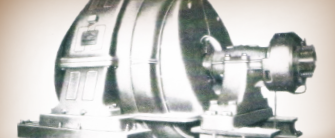
Synch Condenser Upgrades
- Higher reliability and efficiency
- Lower total cost of ownership
- Modern controls and excitation – improved response time

Grid Code Compliance
- Enhanced ROCOF (Rate of Change of Frequency)
- Improved LVRT (Low Voltage Ride Through)
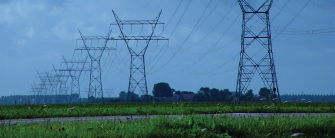
Grid Support
- Local voltage support during contingencies and faults
- Provides short term overload capability
- Improves weak AC grid performance
- EHV cables
- Excessive shunt compensation
- Weak AC Grid

Regulatory/Environmental
- Condenser can replace the dynamic voltage regulation and inertia from retired units
- Allows utility to maintain system performance and grid stability
- EPA Coal Requirements
- Once thru cooling requirements
- Generation Retirements
Customer Case Studies
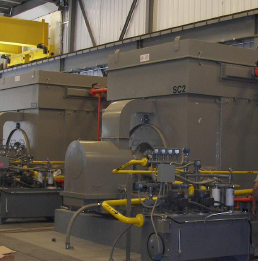
Customer Name
Vermont Electric Company (VELCO)
Location
Granite Substation, Vermont, USA
Application / Challenge:
As part of the Northwest Vermont Reliability Project a number of upgrades were investigated to provide for the reactive power needs at the Granite substation. Simulations indicated that the power system is very near a point of voltage instability. In the case of an outage of the Vermont Yankee – Coolidge 345kV line, a continuous reactive power control device is critical to prevent voltage collapse.
Solution:
- Qty (4) +25/-12.5 Mvar sync condensers
- Qty (4) 25 Mvar shunt banks (MSC)
- Qty (2) Phase shifting transformers
- Integrated control system
Reasons cited for the synchronous condenser over static devices include low voltage ride through capability and the high short time overload characteristics. The overload capability of the condensers provides sufficient time for the mechanically switched 115kV shunt capacitors to be placed into service.
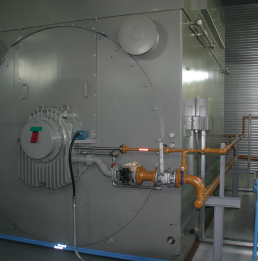
Customer Name
Korea Electric Power Company (KEPCO)
Location
Jeju Converter Station Jeju Island, Korea
Application / Challenge:
The function of a synchronous condenser system in a weak AC grid, and especially one that connects via an HVDC converter terminal, is to improve short circuit strength, provide inertia, and improve reliability.
Solution:
GE Vernova supplied two +50/-25 Mvar synchronous condensers to KEPCO that allow the Chejuu-Haenam HVDC link to continue to cost effectively and efficiently provide power to the island.
With successful installation of the synchronous condensers, KEPCO will be able to retire their existing, converted gas turbine synchronous condensers and transport more power on the existing grid network.
